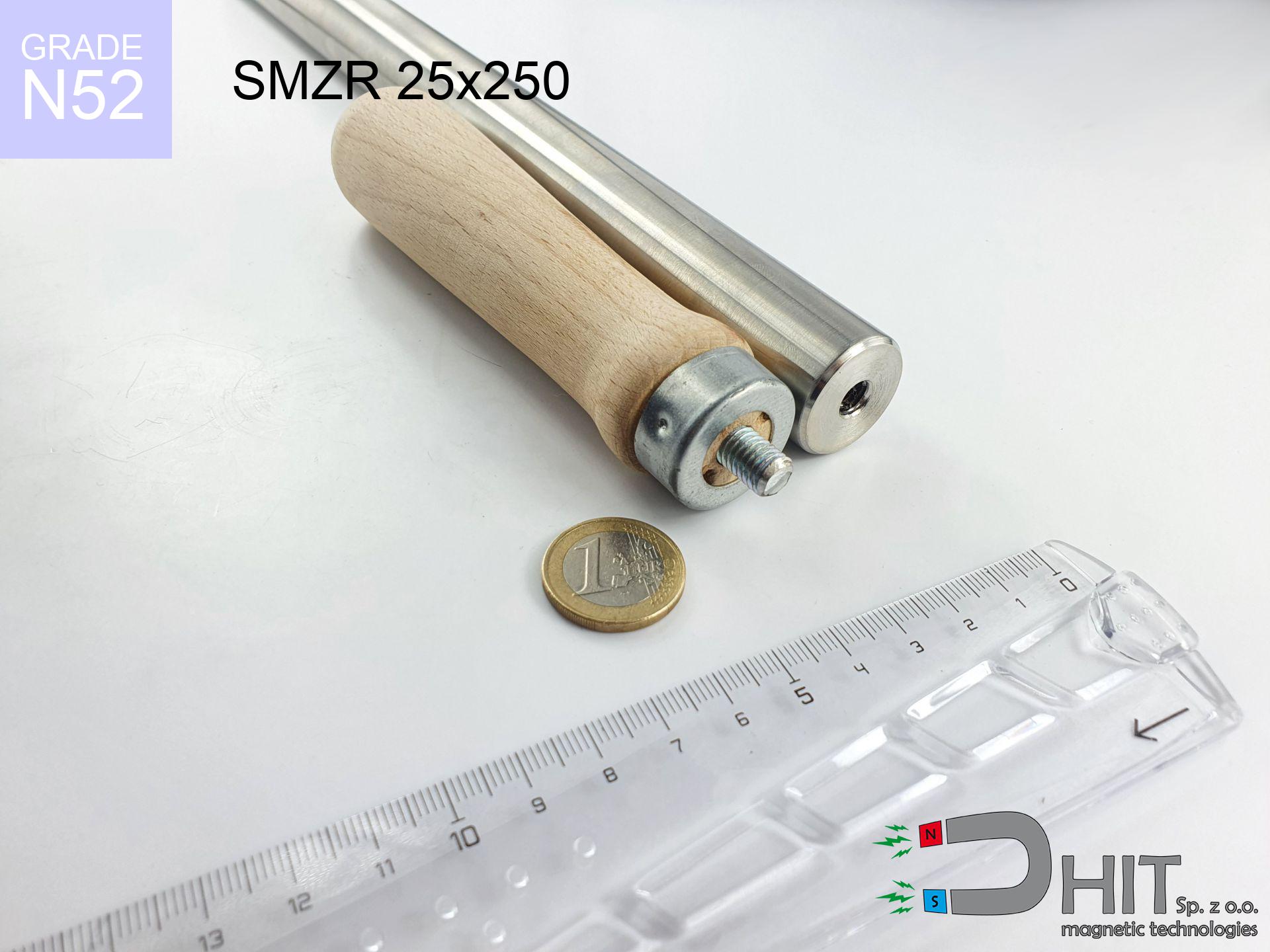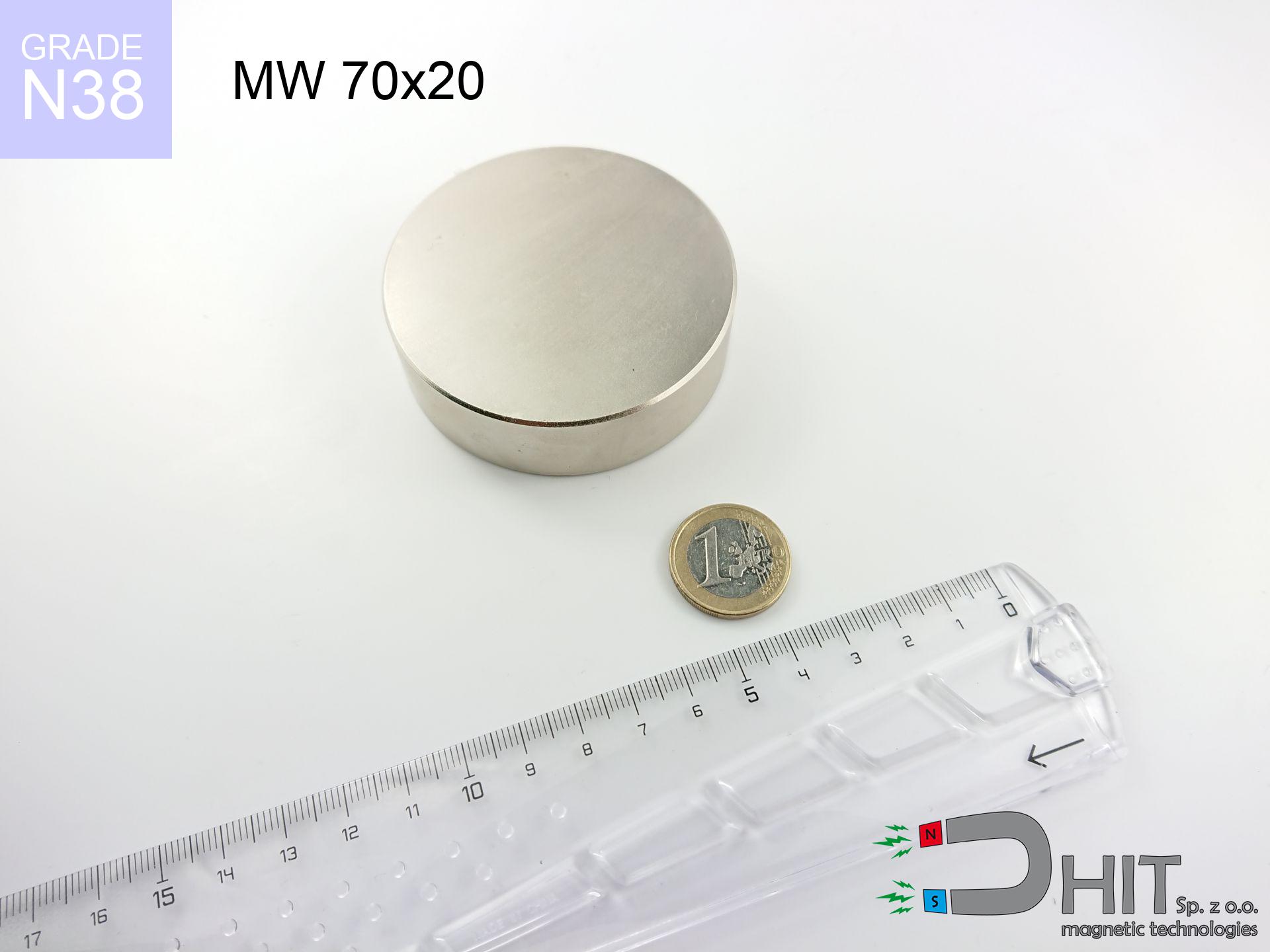NCM 15x13.5x5 / N38 - channel magnetic holder
channel magnetic holder
Catalog no 360486
GTIN/EAN: 5906301814856
Diameter Ø
15 mm [±1 mm]
Height
13.5 mm [±1 mm]
Weight
6.8 g
Magnetization Direction
↑ axial
Load capacity
7.00 kg / 68.65 N
Coating
[NiCuNi] Nickel
5.10 ZŁ with VAT / pcs + price for transport
4.15 ZŁ net + 23% VAT / pcs
bulk discounts:
Need more?
Call us now
+48 888 99 98 98
if you prefer contact us by means of
inquiry form
through our site.
Parameters along with appearance of a neodymium magnet can be tested on our
online calculation tool.
Orders submitted before 14:00 will be dispatched today!
Technical details - NCM 15x13.5x5 / N38 - channel magnetic holder
Specification / characteristics - NCM 15x13.5x5 / N38 - channel magnetic holder
| properties | values |
|---|---|
| Cat. no. | 360486 |
| GTIN/EAN | 5906301814856 |
| Production/Distribution | Dhit sp. z o.o. |
| Country of origin | Poland / China / Germany |
| Customs code | 85059029 |
| Diameter Ø | 15 mm [±1 mm] |
| Height | 13.5 mm [±1 mm] |
| Weight | 6.8 g |
| Magnetization Direction | ↑ axial |
| Load capacity ~ ? | 7.00 kg / 68.65 N |
| Coating | [NiCuNi] Nickel |
| Manufacturing Tolerance | ±1 mm |
Magnetic properties of material N38
| properties | values | units |
|---|---|---|
| remenance Br [min. - max.] ? | 12.2-12.6 | kGs |
| remenance Br [min. - max.] ? | 1220-1260 | mT |
| coercivity bHc ? | 10.8-11.5 | kOe |
| coercivity bHc ? | 860-915 | kA/m |
| actual internal force iHc | ≥ 12 | kOe |
| actual internal force iHc | ≥ 955 | kA/m |
| energy density [min. - max.] ? | 36-38 | BH max MGOe |
| energy density [min. - max.] ? | 287-303 | BH max KJ/m |
| max. temperature ? | ≤ 80 | °C |
Physical properties of sintered neodymium magnets Nd2Fe14B at 20°C
| properties | values | units |
|---|---|---|
| Vickers hardness | ≥550 | Hv |
| Density | ≥7.4 | g/cm3 |
| Curie Temperature TC | 312 - 380 | °C |
| Curie Temperature TF | 593 - 716 | °F |
| Specific resistance | 150 | μΩ⋅cm |
| Bending strength | 250 | MPa |
| Compressive strength | 1000~1100 | MPa |
| Thermal expansion parallel (∥) to orientation (M) | (3-4) x 10-6 | °C-1 |
| Thermal expansion perpendicular (⊥) to orientation (M) | -(1-3) x 10-6 | °C-1 |
| Young's modulus | 1.7 x 104 | kg/mm² |
Elemental analysis
| iron (Fe) | 64% – 68% |
| neodymium (Nd) | 29% – 32% |
| boron (B) | 1.1% – 1.2% |
| dysprosium (Dy) | 0.5% – 2.0% |
| coating (Ni-Cu-Ni) | < 0.05% |
Environmental data
| recyclability (EoL) | 100% |
| recycled raw materials | ~10% (pre-cons) |
| carbon footprint | low / zredukowany |
| waste code (EWC) | 16 02 16 |
Other products
Strengths and weaknesses of neodymium magnets.
Strengths
- They retain attractive force for around ten years – the drop is just ~1% (according to analyses),
- They do not lose their magnetic properties even under close interference source,
- A magnet with a shiny nickel surface looks better,
- The surface of neodymium magnets generates a intense magnetic field – this is one of their assets,
- Due to their durability and thermal resistance, neodymium magnets can operate (depending on the form) even at high temperatures reaching 230°C or more...
- Possibility of precise creating and optimizing to defined needs,
- Fundamental importance in modern technologies – they are utilized in data components, electric motors, precision medical tools, as well as other advanced devices.
- Relatively small size with high pulling force – neodymium magnets offer impressive pulling force in small dimensions, which makes them useful in miniature devices
Limitations
- They are prone to damage upon too strong impacts. To avoid cracks, it is worth securing magnets in special housings. Such protection not only protects the magnet but also increases its resistance to damage
- Neodymium magnets decrease their force under the influence of heating. As soon as 80°C is exceeded, many of them start losing their power. Therefore, we recommend our special magnets marked [AH], which maintain stability even at temperatures up to 230°C
- When exposed to humidity, magnets start to rust. For applications outside, it is recommended to use protective magnets, such as those in rubber or plastics, which prevent oxidation as well as corrosion.
- Due to limitations in producing nuts and complicated forms in magnets, we recommend using cover - magnetic mount.
- Possible danger to health – tiny shards of magnets pose a threat, in case of ingestion, which is particularly important in the aspect of protecting the youngest. It is also worth noting that tiny parts of these devices can be problematic in diagnostics medical after entering the body.
- With mass production the cost of neodymium magnets is a challenge,
Holding force characteristics
Maximum holding power of the magnet – what it depends on?
- with the use of a yoke made of special test steel, guaranteeing full magnetic saturation
- with a thickness of at least 10 mm
- with an polished touching surface
- with total lack of distance (without coatings)
- for force acting at a right angle (in the magnet axis)
- at ambient temperature room level
What influences lifting capacity in practice
- Clearance – existence of foreign body (paint, dirt, air) acts as an insulator, which lowers capacity steeply (even by 50% at 0.5 mm).
- Load vector – maximum parameter is reached only during pulling at a 90° angle. The shear force of the magnet along the surface is usually several times lower (approx. 1/5 of the lifting capacity).
- Element thickness – to utilize 100% power, the steel must be sufficiently thick. Paper-thin metal restricts the lifting capacity (the magnet "punches through" it).
- Material type – the best choice is high-permeability steel. Hardened steels may generate lower lifting capacity.
- Surface structure – the smoother and more polished the plate, the better the adhesion and stronger the hold. Unevenness creates an air distance.
- Thermal environment – heating the magnet causes a temporary drop of force. It is worth remembering the thermal limit for a given model.
Holding force was tested on the plate surface of 20 mm thickness, when a perpendicular force was applied, in contrast under parallel forces the load capacity is reduced by as much as 75%. Moreover, even a small distance between the magnet and the plate lowers the load capacity.
H&S for magnets
Impact on smartphones
Navigation devices and mobile phones are extremely susceptible to magnetism. Direct contact with a powerful NdFeB magnet can permanently damage the sensors in your phone.
Avoid contact if allergic
Nickel alert: The Ni-Cu-Ni coating consists of nickel. If an allergic reaction appears, cease handling magnets and use protective gear.
Risk of cracking
Beware of splinters. Magnets can explode upon uncontrolled impact, ejecting shards into the air. Eye protection is mandatory.
ICD Warning
Individuals with a ICD should maintain an large gap from magnets. The magnetism can stop the operation of the life-saving device.
Danger to the youngest
Absolutely store magnets out of reach of children. Choking hazard is significant, and the consequences of magnets clamping inside the body are fatal.
Immense force
Handle with care. Rare earth magnets attract from a distance and snap with huge force, often faster than you can move away.
Demagnetization risk
Do not overheat. Neodymium magnets are sensitive to heat. If you require operation above 80°C, look for special high-temperature series (H, SH, UH).
Crushing force
Protect your hands. Two powerful magnets will snap together immediately with a force of massive weight, destroying everything in their path. Exercise extreme caution!
Keep away from computers
Intense magnetic fields can destroy records on payment cards, HDDs, and other magnetic media. Keep a distance of at least 10 cm.
Combustion hazard
Dust produced during machining of magnets is flammable. Do not drill into magnets without proper cooling and knowledge.



![SM 25x400 [2xM8] / N52 - magnetic separator SM 25x400 [2xM8] / N52 - magnetic separator](https://cdn3.dhit.pl/graphics/products/sm-25x400-2xm8-hoj.jpg)




